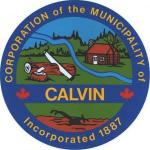 Country music singer Karen-Lee Batten’s face is the first thing you see when you go to www.cityinthecountry.ca. The former Canadian Idol star is extolling the virtues of her hometown of Abbotsford, British Columbia, noting, “We’re surrounded by some of the most gorgeous scenery and amazing people you’ll find anywhere in the world.”
Country music singer Karen-Lee Batten’s face is the first thing you see when you go to www.cityinthecountry.ca. The former Canadian Idol star is extolling the virtues of her hometown of Abbotsford, British Columbia, noting, “We’re surrounded by some of the most gorgeous scenery and amazing people you’ll find anywhere in the world.”
Promoting itself as the “city in the country,” Abbotsford’s web portal also includes a welcome video (found under the EXPLORE tab) that highlights its mountain scenery, green space, recreation opportunities and agricultural land. The slogan is utilized throughout the video, which ends with the phrase, “Two worlds, one city. Abbotsford: the city in the country.”
Since 2006, the city has been promoting itself – or in the lingo of the times, building its brand – as a community that offers the amenities of urban living, combined with the proximity to nature offered in more rural municipalities.
Earlier this month, the campaign was awarded three Marketing Canada Awards from the Economic Developers Association of Canada (EDAC).

Abbotsford’s overall brand, as well as its web portal and a 2007 print marketing campaign were all recognized in the 2008 awards program, which attracted entries from over 220 communities across Canada.
“We have been working hard to position the city as a desirable place to live, work and raise a family,” says Mayor George Ferguson. “The city in the country theme provides us with the best of both worlds and is a unique benefit for our community.”
Jim McGimpsey, of On Three Communication Design Inc., was one of EDAC’s judges of the Marketing Canada Awards. He says the Abbotsford campaign offered a distinct brand, a memorable campaign and a creative website.
“Abbotsford was recognized this year for demonstrating that you don't need to have a big budget to develop a strong brand and effective marketing materials and tools,” says McGimpsey.
Like many in the marketing field, he believes that a strong brand has become an essential tool for municipalities. However, he cautions that branding places can be more challenging than branding products or companies. “A strong brand must be flexible and versatile enough to apply to tourism, business development and to target specific sectors,” McGimpsey explains.
“It must accommodate the needs of multiple groups and communicate a number of ideas. “It must do this without suffering the watering down that often results from trying to be all things to all people. This is a delicate balance to strike and one that is unique to the business of branding places.”
To be successful, he adds, a brand must be truly reflective of a municipality. “Whether you pay attention to branding or not, your audience has a perception about your city. For a brand to succeed it must be rooted in what is great and unique about a community.”










